How smugglers are flouting Delhi’s strictest-ever Diwali fireworks ban
Delhi’s toxic winter has arrived late this year – but with Diwali celebrations on Monday, air quality is set to crash into the ‘very poor’ category for the foreseeable future. Arpan Rai reports from the Indian capital on how a tough ban on fireworks still won’t be enough to stave off the smog

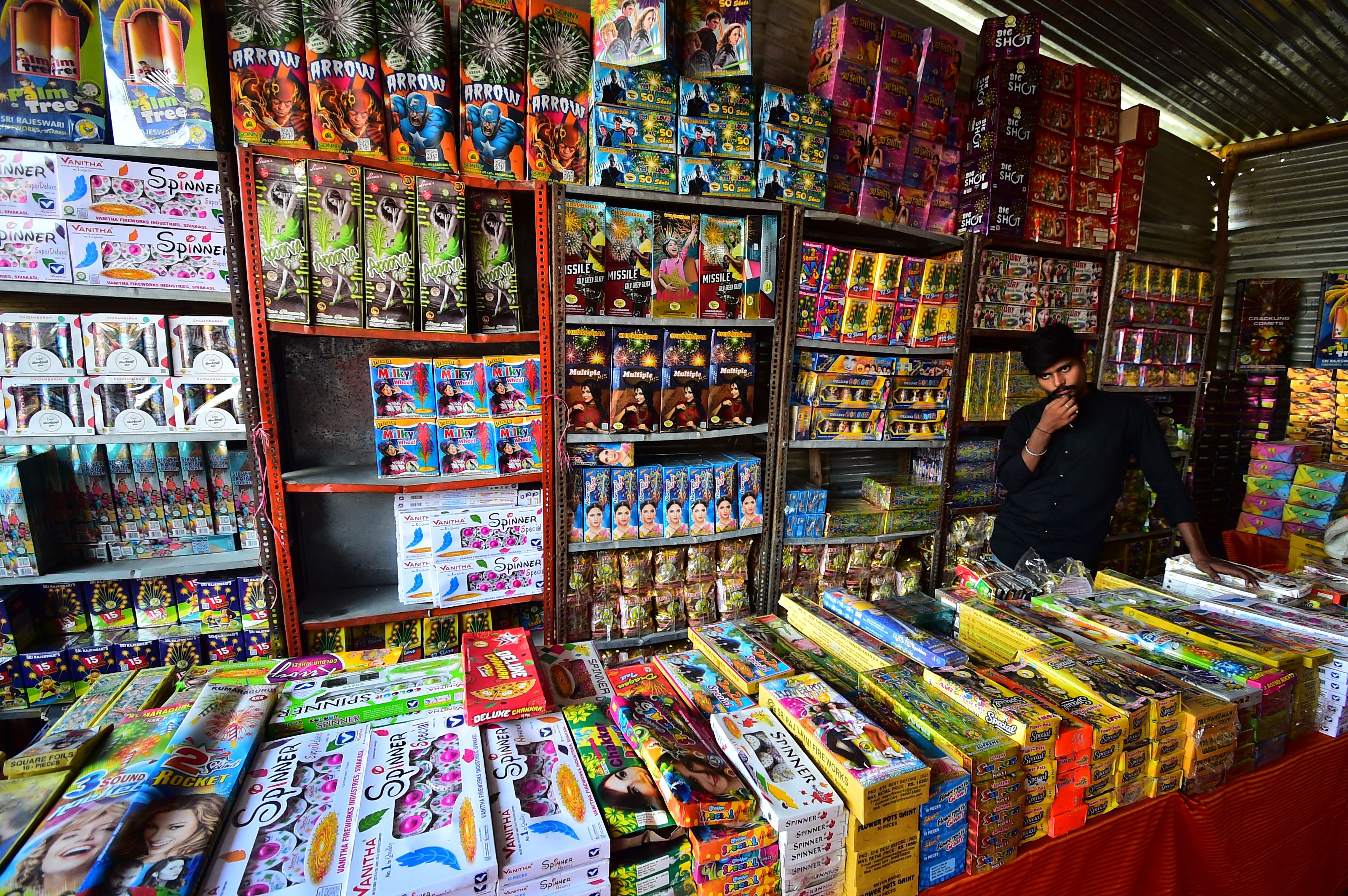
Out of car boots, inside dusty warehouses and at the back of grocery shops, Delhi police are cracking down on the smugglers who are risking jail time to deal in an unusual illicit product – fireworks.
This Diwali the authorities in the Indian capital are enforcing the city’s toughest fireworks ban yet, after years in which efforts to discourage their use around the major Hindu festival have failed to make a dent.
Monday is the main day for Diwali festivities this year and a national holiday across India, and meteorologists warn that even with the fireworks ban air quality is set to plunge into the “very poor” category from Sunday – the kind of air that could be hazardous to anyone’s health with prolonged exposure, but particularly for the young, elderly and people with lung and heart diseases.
Delhi’s air quality has actually not yet hit the dire levels residents have come to expect by late October. Sitting in his office at the India Meteorological Department in the heart of Delhi, Dr VK Soni explains that this is because of weather conditions, not government action – winds are moving easterly, meaning pollutants from the North Indian plains are being carried out towards the Arabian Sea, rather than hovering around Delhi.
But this is only bringing a temporary respite, he warns, with the blue sky visible through his small window soon set to turn the hazy orange colour it will remain for the next several months.

Though Diwali fireworks can often be blamed for the smoggy winters that make Delhi the capital with the most polluted air in the world, there are actually a large number of factors that cause the air quality to drop and stay low for such a long period. At this time of year traffic on the roads increases, farmers in neighbouring agrarian states burn crop stubble, and colder, stiller weather conditions settle in.
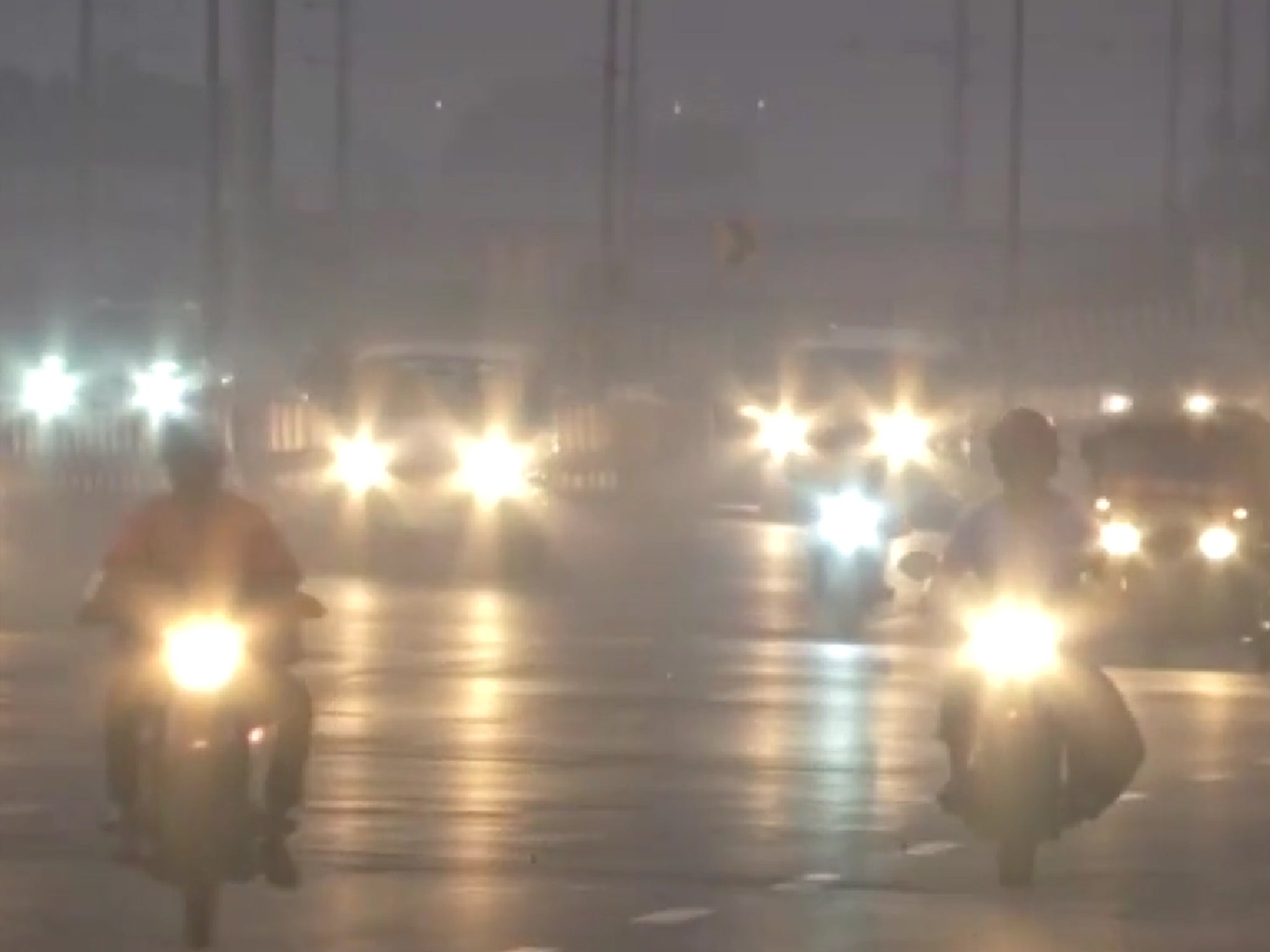
“Delhiites should brace for extremely unhealthy air conditions starting Sunday evening because of the spike in vehicular emissions and traffic congestion choking the streets as thousands will throng the city for the festive season,” Dr Soni tells The Independent.
Fireworks – called firecrackers here – may be only on cause of air pollution, but their use in previous years has definitely contributed to a dip in the AQI. Despite previous efforts to ban crackers or, in earlier years, require the use of only so-called “green” fireworks with lower emissions, the night of Diwali has invariably been accompanied by itchy throats, watery eyes and a metallic taste in the mouth.
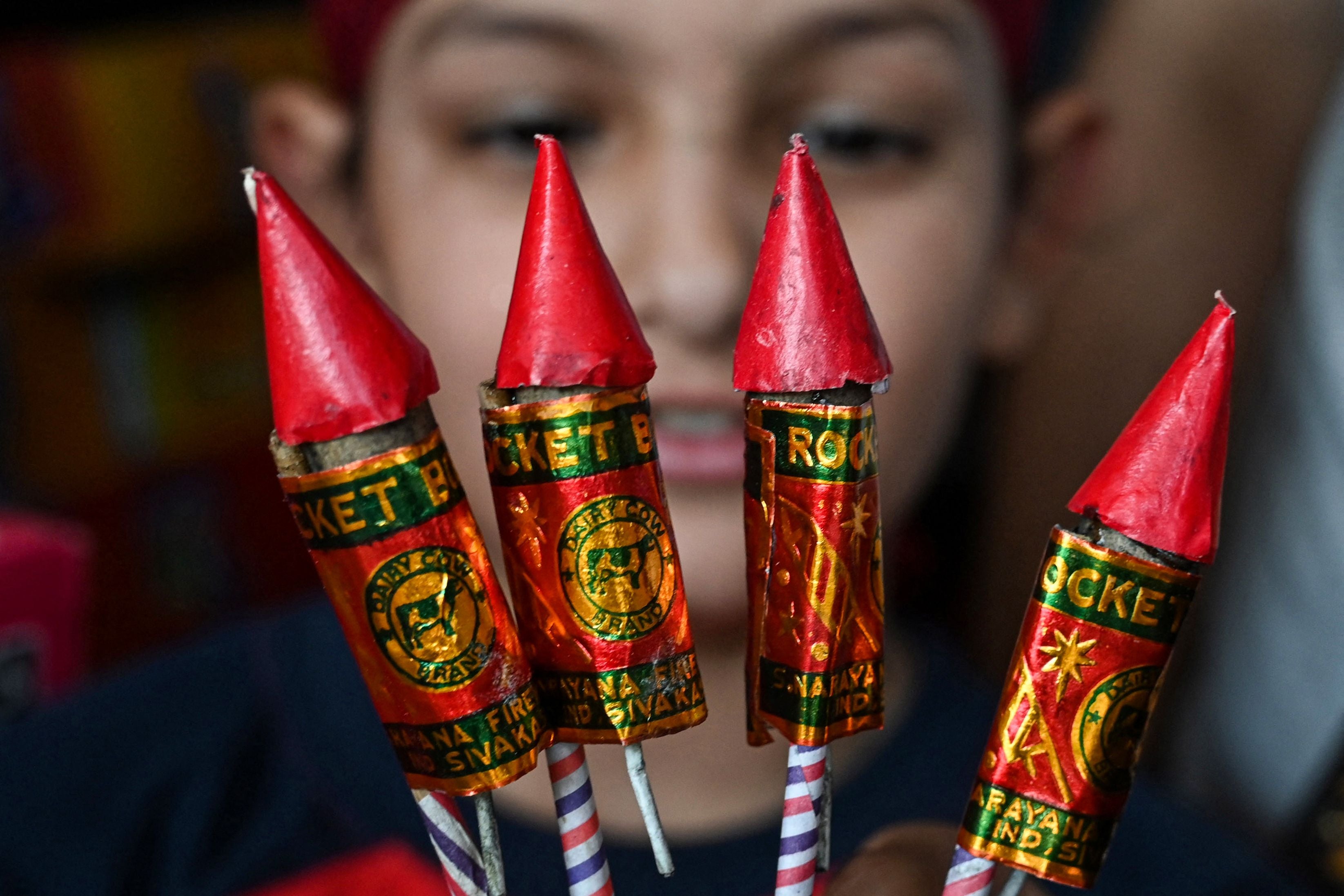
This year the Delhi administration has warned that those who are caught selling fireworks face a hefty fine and jail terms, with this strictest-ever ban on the sale, purchase and trading of firecrackers brought in weeks ahead of the festival in September. There have also been public information campaigns, and brands running adverts encouraging people to celebrate Diwali in other, less polluting ways.
Yet there are still many Hindus who see fireworks as an important part of the festival, and plenty of locals and traders are willing to risk flouting the restrictions.
In the days leading up to Diwali, a simple Google search of “Crackers near me in Delhi” throws up over a dozen sellers. The Independent dialed about 10 of these which had shared contact details online, and found at least four were ready to supply all manner of firecrackers from sparklers to skyshots and garlands of up to 10,000 small bombs.
Another quick search on Instagram showed two vendors willing to sell “green” crackers – claiming they are an environmentally friendly version emitting less smoke. Within an hour, we had six vendors ready to sell products that have been strictly outlawed for weeks by the authorities. Some offered home delivery, while two offered to deliver to a drop-off point mid-way. None were ultimately bought by The Independent.
Delhi police say they are working hard to enforce the law as best they can, with more than 8,000kg of fireworks seized so far in raids carried out by plain-clothes officers, and chasing up tip-offs across different parts of the city.
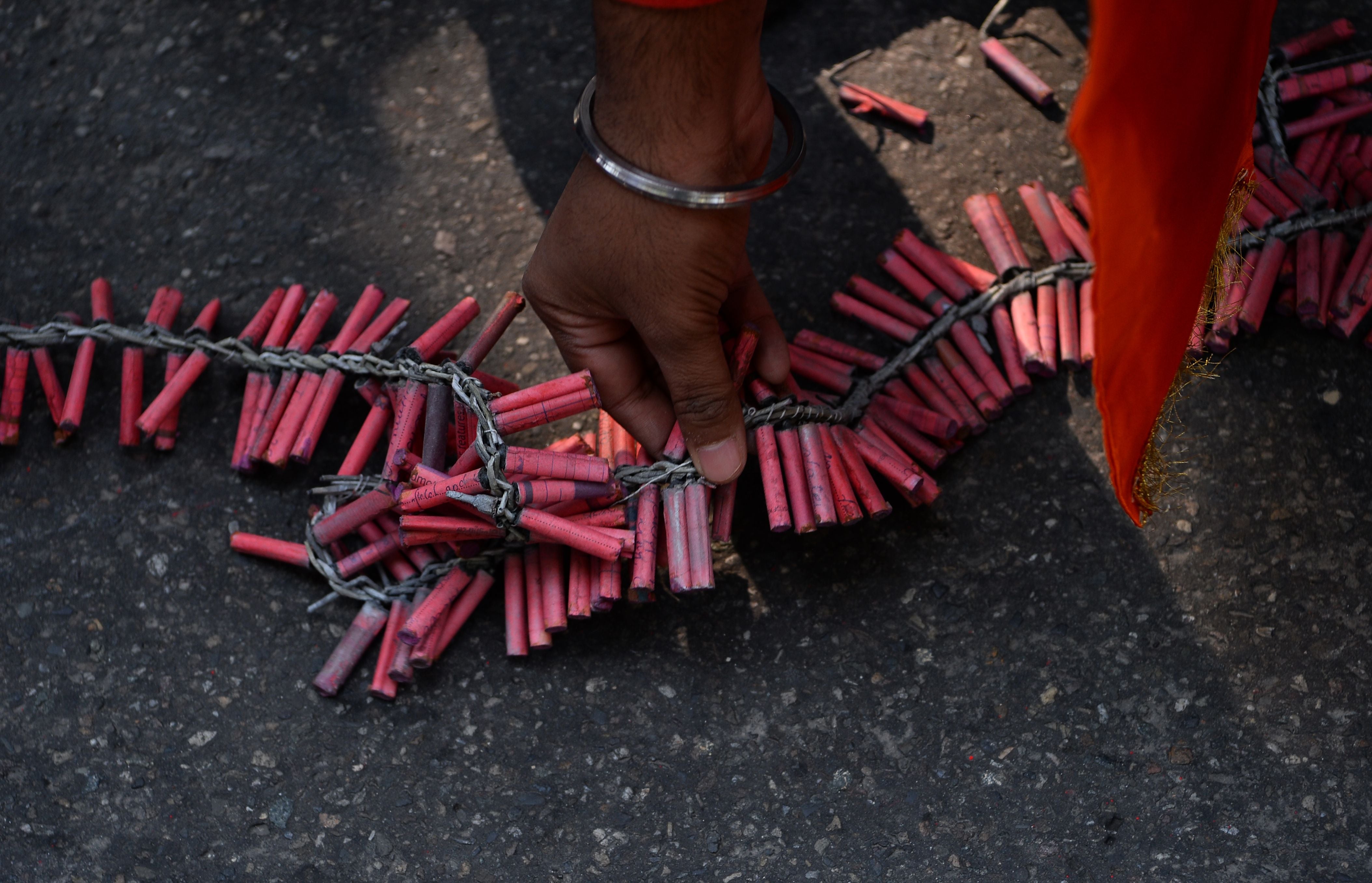
“We are rounding up some good catches and finding sellers with 500-1,000kg of firecrackers,” says Dependra Pathak, a Delhi Police special commissioner.
The largest hauls have come from warehouses, but officers have also busted general stores selling fireworks out the back and even mobile car boot sales storing and selling many cartons of crackers.
One arrested man confessed to selling fireworks by using a slip of paper to note down what people were looking to purchase and then going to a car mechanic shop being used as a front to store them. He would fetch the required quantity and hand over the “patakha (cracker) parcel” two or three hours later, police said.
Pathak says their busiest day will be Monday itself and that patrols will continue round-the-clock to try and stop people buying and bursting crackers. For those who are caught, he says, punishment is a must – but he is also aware that the issue has become sensitive politically at a time of rising Hindu nationalist sentiment.
“Sending a message is important and at the same time, we are aware that crackers are being treated as an element of culture.” Ultimately, he adds, the ban itself is not a matter of politics – it was ordered in 2020 by the independent National Green Tribunal, and regardless of city or state “there are overarching guidelines from the federal [body]” that must be followed.
Around 80 per cent of Delhi’s population is Hindu, and though it is in political opposition in the capital territory, Narendra Modi’s nationally ruling Bharatiya Janata Party has taken up the issue of defending Hindus’ right to celebrate Diwali with fireworks if they choose.
The BJP has accused the Delhi government – run by the AAP party – of refusing to allow a “complete celebration” of Diwali by trying to enforce the fireworks ban more strictly. Though there’s no reference to firecrackers in Hindu mythology or religious manuscripts, they have become closely associated with the festival of lights, which is traditionally marked by the lighting of diyas (lamps) and the drawing of elaborate rangoli with colourful powder, among other activities.
“This is a clear attack on us Hindus wanting to celebrate Diwali in our own ways. We know pollution is a disaster but why not give us a window of a few hours to burst crackers,” Tajinder Bagga, a spokesperson for the BJP’s Delhi unit, tells The Independent.
On his social media, Bagga has compared the Delhi chief minister to the Muslim emperors who ruled India from early 16th century to 18th century. Some accuse the Mughal rulers of curbing Hindu festival celebrations during this era, though this is debated by historians.
One video shared by him shows a child saying: “You descendents of Mughals, you will teach us how to celebrate Diwali? Now watch!” as he proceeds to light a banned firecracker.
Some advocates for fireworks argue that they cause far less pollution than the seasonal crop stubble burning carried out by farmers in neighbouring Punjab, India’s breadbasket. Stubble burning is also banned, and also politically sensitive, with parties unwilling to increase the fines and enforcement of the ban and risk losing the electoral support of farmers.
But experts say the impact of stubble burning on air pollution has also been overstated, with a recent study concluding Delhi’s annual air quality crisis is born largely of its own pollution sources, not from neighbouring states.
Delhi witnesses its poorest AQI from November to January and this is mainly caused by festivities and stable weather conditions which lock the pollutants in the cold air till at least February, says Dr Pavneet Kaur Kingra, the study’s author and head of Punjab Agriculture University’s department on climate change and agricultural meteorology.
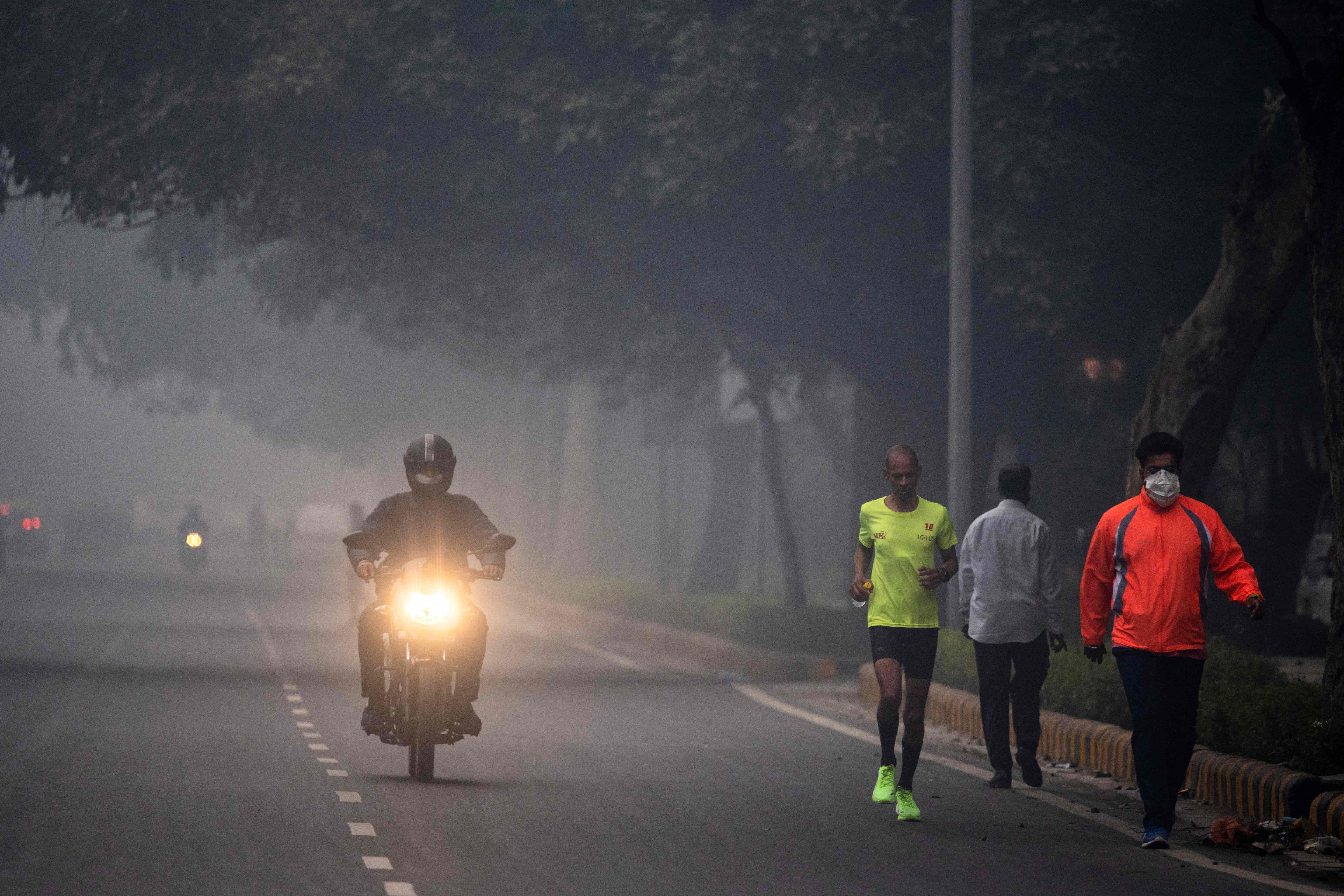
Crop residue is also burnt in the summer months of April and May, she says, pointing out that smoke does not linger over Delhi’s atmosphere nearly as much during this season, making weather conditions arguably the strongest factor behind the capital’s air crisis.
Monday’s forecast AQI of “very poor” will be Delhi’s worst air since February, barring a few anomalous days in July during a freak dust storm.
Delhi is suffering from this misery because of its own entrenched pollution sources, mostly from vehicles and the massive emissions put out by industries both within and outside the city’s periphery, Dr Kingra says. Her study evaluated Delhi’s AQI in all months over the last three years.
In the last week, transportation alone contributed 20-30 per cent of Delhi’s air pollution, says senior weather forecaster Dr Soni. “This can go as high as 40 per cent, as it does every year,” he says, adding that at this point it is too late to avert yet another winter of toxic smog in the capital. “I can only request the elderly and children to absolutely stay indoors, without any compromises,” he says.
Join our commenting forum
Join thought-provoking conversations, follow other Independent readers and see their replies
Comments